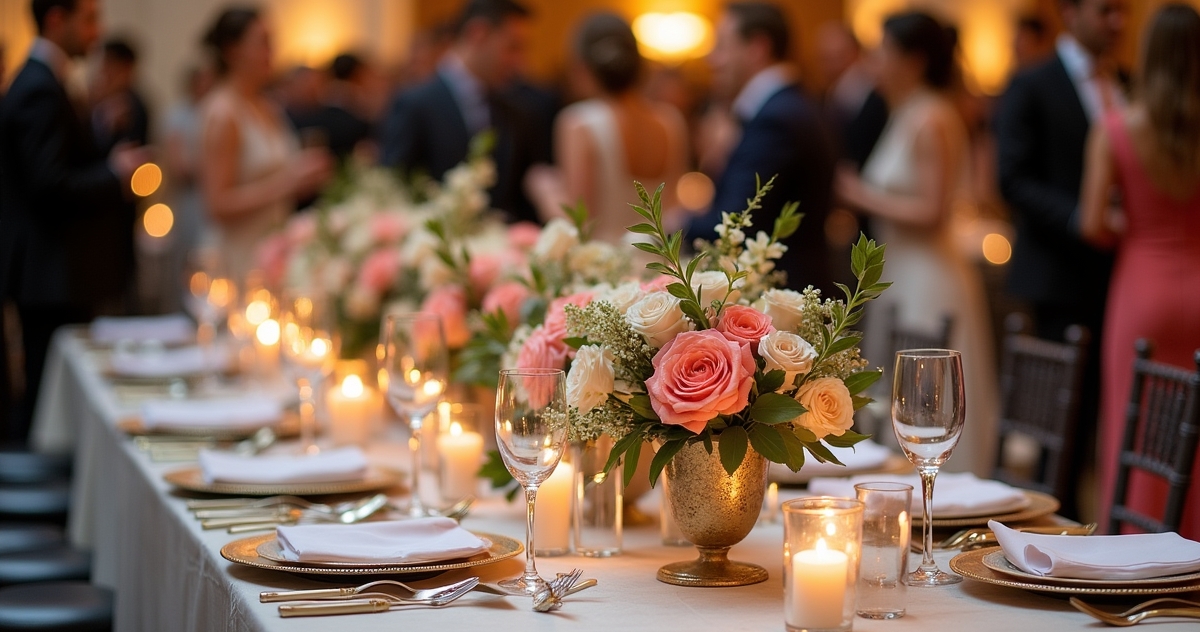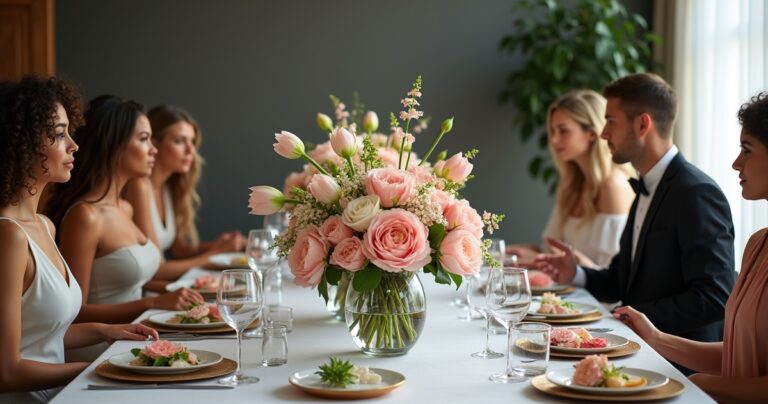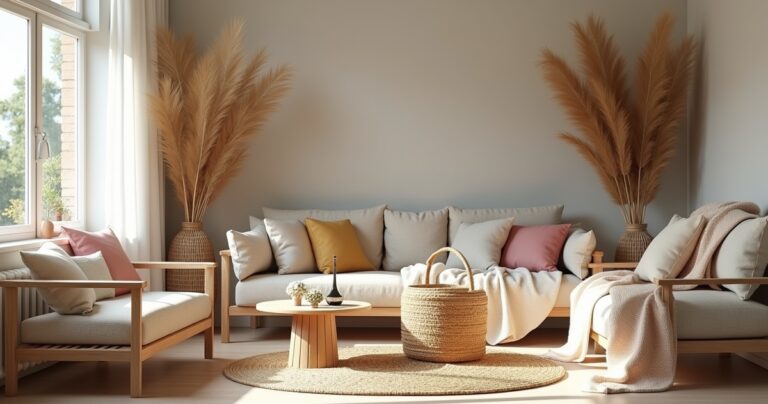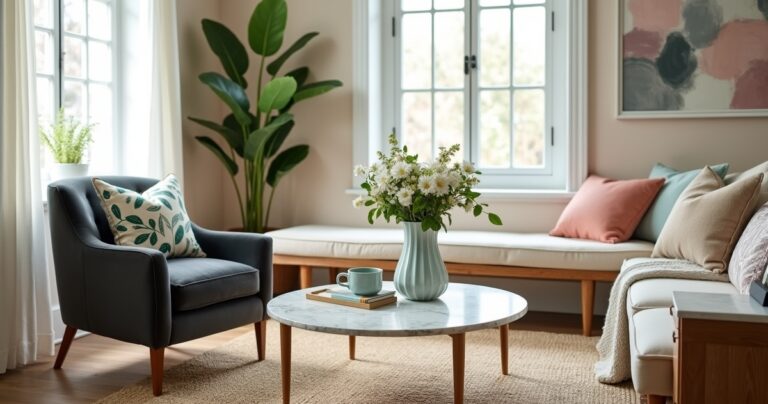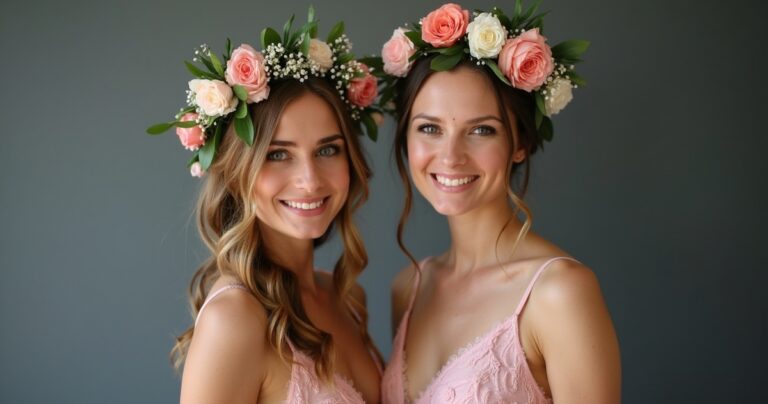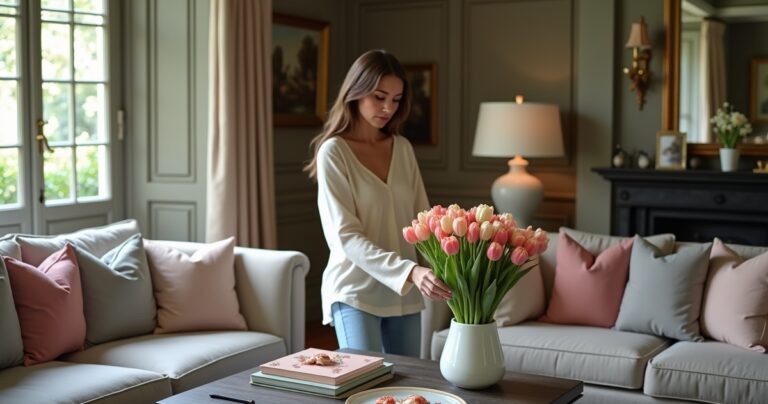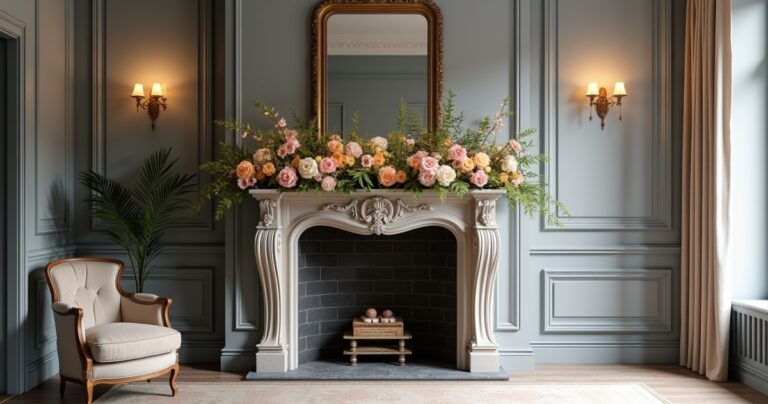Spring is a season of renewal and vibrancy, making it the perfect time to refresh your home decor with stunning spring centerpieces. These arrangements not only add a splash of color but also bring the essence of the season indoors. Let’s explore some creative ideas to make your spring centerpieces stand out.
What are the best flowers for Spring centerpieces?
Seasonal blooms for vibrant arrangements
Spring is synonymous with a burst of colors and fragrances, thanks to the variety of flowers that bloom during this season. Popular choices for spring centerpieces include tulips, daffodils, and hyacinths. These flowers are not only visually appealing but also carry the fresh scent of spring. According to a study by the Society of American Florists, flowers like tulips and daffodils are among the top choices for spring arrangements due to their vibrant colors and availability.
- Tulips: Available in a wide range of colors, they symbolize love and rebirth.
- Daffodils: Known for their bright yellow hue, they represent new beginnings.
- Hyacinths: With their sweet fragrance, they add a sensory element to any arrangement.
Incorporating greenery and foliage
Greenery and foliage are essential components of any spring centerpiece, providing texture and depth. Eucalyptus, ferns, and ivy are excellent choices to complement your floral arrangements. These elements not only enhance the visual appeal but also add a touch of nature to your decor.
- Eucalyptus: Offers a soothing aroma and a silvery-green color.
- Ferns: Provide a lush, full look to arrangements.
- Ivy: Adds a trailing effect, perfect for cascading centerpieces.
Mixing artificial and fresh flowers
Combining artificial and fresh flowers can create a long-lasting and visually appealing centerpiece. This approach allows you to enjoy the beauty of fresh blooms while maintaining the structure and fullness with artificial elements. According to Elan Bazaar, mixing artificial and fresh flowers is a growing trend that offers both practicality and aesthetics.
- Use artificial flowers as a base for structure.
- Add fresh flowers for fragrance and natural beauty.
- Ensure color harmony between artificial and fresh elements.
How do you make a simple Spring centerpiece?
DIY Spring centerpiece ideas
Creating your own spring centerpiece can be a rewarding and creative experience. Start by selecting a theme or color palette that resonates with the season. Consider using everyday items like mason jars or teacups as unique containers for your arrangements.
- Choose a color theme: Pastels, bright colors, or monochrome.
- Use household items as containers: Mason jars, teacups, or baskets.
- Add personal touches: Ribbons, twine, or decorative stones.
Creating a foundation with vases and containers
The foundation of your centerpiece is crucial for stability and aesthetics. Choose vases or containers that complement your decor and the flowers you plan to use. Glass vases are popular for their transparency, allowing the beauty of the stems to be visible.
- Select a vase that suits your style: Glass, ceramic, or metal.
- Consider the height and width for balance.
- Use containers that match your overall decor theme.
Adding floral foam for stability
Floral foam is an essential tool for creating stable and long-lasting arrangements. It helps keep the flowers in place and provides them with water to stay fresh longer. According to floral experts, using floral foam can extend the life of your centerpiece by up to a week.
- Soak the foam in water before use.
- Cut the foam to fit the container snugly.
- Insert stems into the foam for secure placement.
What are some unique Spring centerpiece ideas?
Non-floral Spring centerpiece options
Not all centerpieces need to be floral. Consider using non-floral elements like candles, fruits, or decorative objects to create a unique and eye-catching display. These alternatives can add a modern and sophisticated touch to your spring decor.
- Use candles for a warm, inviting glow.
- Incorporate fruits like lemons or limes for a fresh look.
- Add decorative objects like figurines or glass beads.
Incorporating Easter elements
Easter is a significant part of spring, and incorporating Easter elements into your centerpiece can add a festive touch. Use pastel-colored eggs, bunny figurines, or Easter-themed ribbons to celebrate the holiday.
- Decorate with pastel-colored eggs.
- Add bunny figurines for a playful touch.
- Use Easter-themed ribbons or tablecloths.
Using natural materials like branches and moss
Natural materials like branches and moss can add an earthy and rustic feel to your centerpiece. These elements are perfect for creating a woodland-inspired arrangement that brings the outdoors inside.
- Use branches for height and structure.
- Add moss for a soft, natural base.
- Combine with flowers for a balanced look.
How can I create an affordable Spring centerpiece?
Budget-friendly Spring centerpiece tips
Creating a beautiful spring centerpiece doesn’t have to break the bank. With a little creativity, you can design stunning arrangements using budget-friendly materials and techniques.
- Use seasonal flowers that are readily available.
- Incorporate greenery from your garden.
- Repurpose items from around the house.
Upcycling household items for centerpieces
Upcycling is a sustainable and cost-effective way to create unique centerpieces. Look around your home for items that can be transformed into beautiful decor pieces.
- Use old jars or bottles as vases.
- Repurpose tin cans with a coat of paint.
- Transform old books into decorative bases.
Maximizing impact with minimal materials
Sometimes, less is more. Focus on creating a striking centerpiece with minimal materials by emphasizing color, texture, and arrangement.
- Choose a bold color scheme for impact.
- Use a single type of flower for simplicity.
- Arrange in a way that highlights each element.
What are popular Spring centerpiece trends?
Pastel color palettes for Spring arrangements
Pastel colors are a hallmark of spring decor, offering a soft and soothing aesthetic. Incorporate pastel hues like blush pink, lavender, and mint green into your centerpieces for a trendy and elegant look.
- Use pastel flowers like peonies or roses.
- Add pastel-colored accessories or ribbons.
- Pair with neutral tones for balance.
Incorporating rustic and farmhouse elements
Rustic and farmhouse styles are popular for their charm and simplicity. Incorporate elements like wooden containers, burlap, and twine to achieve this look in your spring centerpieces.
- Use wooden crates or boxes as bases.
- Add burlap or lace for texture.
- Incorporate twine or rope for a rustic touch.
Minimalist Spring centerpiece designs
Minimalism is all about simplicity and elegance. Create a minimalist spring centerpiece by focusing on clean lines, neutral colors, and uncluttered arrangements.
- Use a single type of flower for a clean look.
- Choose neutral or monochrome color schemes.
- Keep arrangements simple and uncluttered.
How do you arrange flowers for a Spring centerpiece?
Basic floral arranging techniques
Arranging flowers is an art that requires a balance of color, texture, and form. Start with a focal point and build around it, ensuring that each element complements the others.
- Choose a focal flower to anchor the arrangement.
- Add filler flowers for volume and texture.
- Ensure a balanced distribution of colors.
Creating height and dimension in centerpieces
Height and dimension add visual interest to your centerpiece. Use varying stem lengths and layers to create a dynamic and engaging arrangement.
- Use taller flowers or branches for height.
- Layer shorter flowers for depth.
- Arrange in a way that draws the eye upward.
Balancing colors and textures
A well-balanced centerpiece combines colors and textures harmoniously. Use contrasting elements to create a visually appealing arrangement that captures the essence of spring.
- Combine soft and bold colors for contrast.
- Mix smooth and textured elements.
- Ensure a cohesive overall look.
What are some Spring centerpiece ideas for weddings?
Romantic Spring wedding centerpiece concepts
Spring weddings are the perfect opportunity to incorporate romantic and elegant centerpieces. Use soft colors, delicate flowers, and elegant containers to create a dreamy atmosphere.
- Choose soft colors like blush or ivory.
- Use delicate flowers like roses or lilies.
- Incorporate elegant containers like crystal vases.
Incorporating seasonal elements into wedding decor
Seasonal elements can enhance the theme of a spring wedding. Use flowers, greenery, and other natural materials to create a cohesive and seasonal look.
- Use seasonal flowers for authenticity.
- Incorporate greenery for a natural touch.
- Add seasonal decor like butterflies or birds.
Coordinating centerpieces with overall wedding theme
Ensure that your centerpieces align with the overall theme of your wedding. Whether it’s rustic, modern, or vintage, your centerpieces should reflect the style and mood of the event.
- Match centerpieces to the wedding color scheme.
- Use elements that reflect the wedding theme.
- Ensure consistency across all decor elements.
How can I make my Spring centerpiece last longer?
Tips for extending the life of cut flowers
To keep your spring centerpiece looking fresh, it’s important to care for the cut flowers properly. Simple techniques can significantly extend their lifespan.
- Trim stems at an angle for better water absorption.
- Change the water every few days to prevent bacteria.
- Keep flowers away from direct sunlight and heat.
Proper care and maintenance of Spring centerpieces
Regular maintenance is key to preserving the beauty of your centerpiece. With a little attention, you can enjoy your arrangement for weeks.
- Remove wilted flowers promptly.
- Mist flowers to keep them hydrated.
- Use a clean vase to prevent contamination.
Using preservatives and flower food
Flower preservatives and food can help maintain the freshness of your centerpiece. These products provide essential nutrients and prevent bacterial growth.
- Add flower food to the water for nourishment.
- Use preservatives to extend flower life.
- Follow package instructions for best results.
FAQs
How often should I change the water in my Spring centerpiece?
Changing the water in your spring centerpiece every two to three days is recommended. This helps prevent bacterial growth and keeps the flowers fresh. Fresh water also provides essential nutrients to the flowers, extending their lifespan.
Can I use artificial flowers in my Spring centerpiece?
Yes, you can use artificial flowers in your spring centerpiece. They offer the advantage of longevity and can be mixed with fresh flowers for a natural look. Artificial flowers are also low-maintenance, making them a practical choice for busy households.
What are some alternatives to traditional vases for Spring centerpieces?
Alternatives to traditional vases include mason jars, teacups, and wooden boxes. These options add a unique and personal touch to your centerpiece. Using unconventional containers can also enhance the theme and style of your decor.
How can I incorporate candles into my Spring centerpiece?
Incorporating candles into your spring centerpiece adds warmth and ambiance. Place candles in glass holders or lanterns to complement the floral arrangement. Ensure that the candles are positioned safely to avoid any fire hazards.
What are some child-friendly Spring centerpiece ideas?
Child-friendly spring centerpieces can include elements like colorful paper flowers, plush toys, or plastic eggs. These items are safe and engaging for children, making them ideal for family gatherings. Additionally, using non-breakable containers can prevent accidents.

